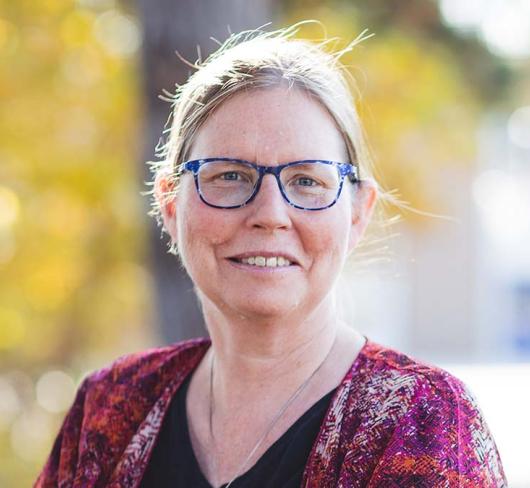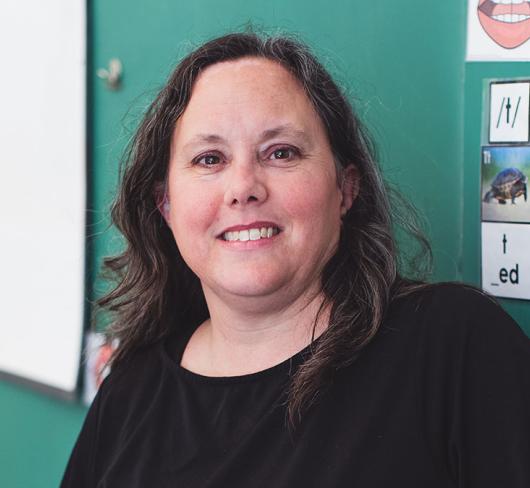
Meaningful Participation in the Regular Classroom: Supporting Students with Severe Disabilities
Imagine you are a teacher of a grade three class of 28 students. One of your students has cerebral palsy. He is unable to sit without support, to walk, to manipulate objects with his hands, or to speak using his voice. He communicates by pointing to pictures and words in a communication book. He has an educational assistant supporting him.
This scenario is becoming more common in regular * classrooms in Ontario. The evolving Ministry of Education and Training policies regarding the instruction of exceptional learners are changing the what, where, and how of teaching. As a result of policy and parental pressure, more individuals with severe disabilities are being taught in regular classrooms in their neighbourhood school.
The challenges presented by such students impact their learning and your teaching. Would you feel prepared to design activities for the class that would accommodate the individual learning style of this student? Would you feel confident about managing an additional teaching professional in the classroom? Would you know about the type of support that might be expected from other professionals who could join your team?
The Communication and Writing Aids Service at Bloorview MacMillan Centre provides augmentative and alternative communication (AAC) service to students who are unable to speak or to write adequately to meet their functional communication needs. We are often asked to consult regarding the inclusion of AAC users into regular classroom instruction, in particular, literacy and numeracy. Our clinical experience reinforces research which points out that students who use AAC have restricted opportunities and access to learning materials, passively participate in academic and social activities, and that there are often conflicting goals and expectations amongst the professionals who support them (Koppenhaver & Yoder, 1993; McGhie-Richmond & McGinnis, 1995). There is a growing need to provide systemic, specialized support services to regular classroom teams who are faced with an increasing number of children with severe disabilities.
During the 1997-98 school year, we have been involved with the Durham Region Separate School Board in a pilot project supported by the TIPP program of the Ministry of Education, entitled "Integrating Technology into the Curriculum to Support Student Participation." The purpose of the project was to support a school board team in the assessment of student barriers and to implement a range of solutions that promote active participation of a student who has severe disabilities. The Participation Model Assessment Framework (Beukelman & Mirenda, 1997) was used to assess the student's participation and to plan interventions to promote more active participation. Videotaping of classroom activities was used for assessing barriers to participation and for self-monitoring by the classroom team. The results of the student assessment provided content for workshops on specific technology tools and applications that would enable more active participation in the curriculum. Inclass coaching was also provided to address issues such as learning approach, curriculum modifications and environmental adaptations. In-class coaching has been found to be one of the strategies which best supports the learning style of adult learners (Joyce & Showers, 1980). The results of the pilot project have been promising. We evaluated the effectiveness of our training in terms of the student's participation and independence across three instructional formats:
- group;
- individual; and
- small group.
During baseline, the student showed little or no participation and independence in each of the instructional formats. Once the training of the school team was initiated, the student became a much more active and independent participant across the three formats. It was also interesting to note that the provision of workshops by itself did not result in any changes in student participation. Only when individual coaching and feedback sessions were added did we see changes in participation.
In addition to these objectives successful outcomes, the Durham team also reported benefits as a team in dealing with issues such as team roles and building consensus amongst team members regarding goals and expectations for this student. For example, it has resulted in the team having a common understanding of how students indicate willingness to participate in discussion, and, more importantly in the expectation that students should participate in class discussion. The team agreed on issues related to the subject content and the volume of work expected in different curriculum areas. They also reported benefits for the student in terms of increased independence and participation in most areas of curriculum. It has resulted in the implementation of customized computer keyboard settings, a small keyboard, a word prediction program, and re-positioning of the computer equipment in the student's workstation. All of these changes have results in increased independence and success in writing activities. Simple low-tech adaptations such as a name stamp and a book stand have also increased independence. The construction of theme-based visual displays for various curricular areas has increased the student's ability to participate. Close scrutiny of the types of participation which meet the classroom learning goals have increased the team's awareness about meaningful participation for all students with special needs.
Dissemination of the results of this project is currently underway. In addition to a number of publications, we will share the content of the project in the form of seminars with OISE/University of Toronto and the colleges which train educational assistants. There is clearly need for continued collaboration among professionals and strong administrative support to provide meaningful educational experiences for students with severe disabilities who are being educated in regular classrooms in their community. For additional information, please contact Susie Blackstien- Adier (adler@mail.yesic.com) or Donna McGhie-Richmond (donnamr@istar.ca)
Susie Blackstien-Adier and Donna McGhie Richmond can be reached at the Communication and Writing Aids Service, Bloorview MacMillan Centre, 350 Rumsey Road, Toronto, ON. Telephone: (416) 424-3805.
References
Beukelman, D.R. & Mirenda, P. (1997) Augmentative and alternative communication: Management of severe communication disorders in children and adults.
Baltimore: Paul H. Brookes. Joyce, B., & Showers, B. (1980). Improving inservice training: The messages of research. Educational Leadership, 37, 379-385.
Koppenhaver, D., Yofer, D.E. (1993). Classroom literacy instruction for children with severe speech and physical impairments (SSPI): What is and what might be. Topics in Language Disorders, 13(2), 1-5.
McGhie-Richmond, D. & McGinnis, J. (1996). A survey of current practices and perceived needs in teaching literacy to students who use augmentative and alternative communication systems. Unpublished Research Report. Toronto, ON. The Bloorview-MacMillan Centre.

